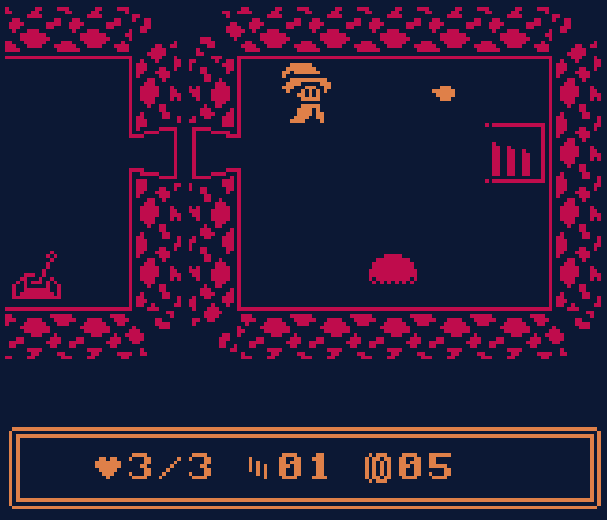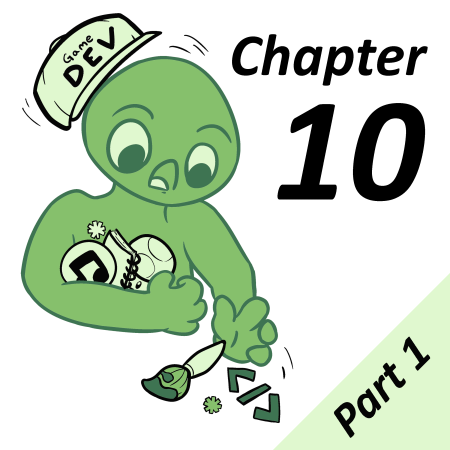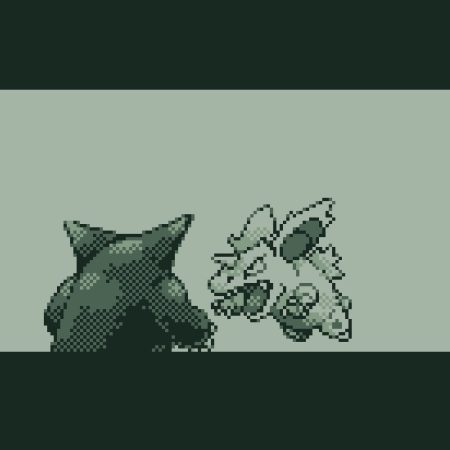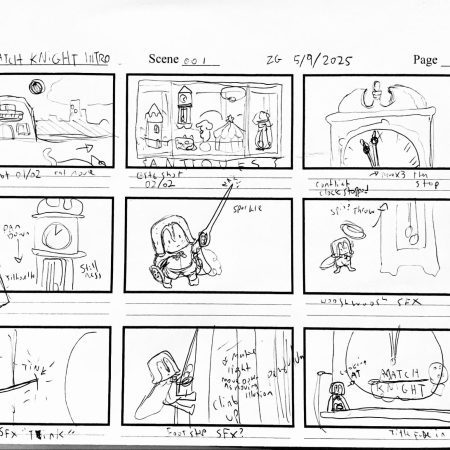Since the dawn of video games, developers have been exploring ways to keep the player engaged long after they have reached the credit sequence. We have come a long way since Midway first coined the term “high score” with their 1976 release Sea Wolf (some trivial knowledge to show off to your friends – you’re welcome!). And while the high score is nowhere near as prevalent in today’s gaming world compared to the days when arcades were on every city block, it was the best answer to “how do we inject replayability into a game?” for many years.
As game development expanded its horizons as an art form, so too did the answer to this important question broaden. Today, twenty years after the last GBC game was released (Harry Potter and the Chamber of Secrets, 2002 for those that want some more trivia knowledge), there are now countless unique and innovative solutions to boosting replayability in video games. Let’s discuss some of these more modern takes on replay value by exploring some of the contemporary GB Homebrew out in the wild!
Multiple Endings
Games like the Pokemon series sure have a lot of content, but once the story is complete, a replay will never show an alternate narrative. Nothing wrong with this of course, but if you want to inject replay value into a narrative driven experience there is one sure fire way to do it – Alternate Endings!
When Polyducks set out to create the interactive fiction Waking Nightmare, a horror game using the text mode graphical style, one of the major design choices was to deliver multiple endings. The player can revisit the same short game loop but with varying outcomes, thereby increasing the playtime and breadth of player experience. Not only that, but the room layouts and dialogue are also randomly generated from a pool of variables to ensure no one playthrough is ever quite the same as the next.
Polyducks coded the first playthrough to automatically reach a dead end on the third room – no matter the path taken by the player. Controlling the experience in this way allows the player to grow accustomed to going back to the beginning of Waking Nightmares dream narrative and, by forcing a restart, the developer lets the player know that this is a normal part of the experience. This particular design choice shines a light on an important aspect of non-linear game design – controlled player experience through game design.
All game design seeks to control the player experience in a positive way, but when random elements are introduced, a level of control over that experience can be lost as a result. One way to counteract this, is to insert controlled events back into the randomness (just as explained above) to ensure a playthrough is not wholly random, but curated to some degree by the developer.
Here are some other GB games that feature multiple endings:
Detective Cat by Mammoth’s Games (2020)
Fix My Heart by Filipe Bianchin (2021)
Decline by Ben Jelter (2022)
Non Linearity
Ben Jelter’s dystopian adventure The Machine takes non-linear storytelling to an extreme not seen before in a Game Boy game. Similar to above, The Machine offers 25 different endings, all while exploring a struggling society through the eyes of Girt, a young man doing his best to wade through the corruption and devilry that never seems to stop cascading down an hierarchical system controlled by an elite few.
I’d like to stress that there is a difference between alternate endings and non-linear game play. While the mystery of a multitude of endings will surely draw the player back into the world of The Machine, it is the vast scope of non-linear game play within this game that boggles the mind. As Girt explores the various pathways through his world, doors will open and close to him. Many of these doors are open to the player at any one time, and will close, one by one, as the player makes their decisions, slowly narrowing the experience towards one of the many endings. At any one time, Girt is free to continue working one of many jobs, or quit at any time to explore another narrative breadcrumb trail. If we were to plot the various pathways of The Machine on paper, the narrative map would look very much like a hand with the beginning of the game at the wrist and the endings on each tip of the finger. On the other hand (pun intended), some would also look very much like a train network, branching paths that offer different experiences, but converging back towards a single event or ending. It is this network of interweaving narratives that offers a sense of freedom of choice and is the crux of the non-linear game design in The Machine.
When creating non-linear narratives within the context of game design, it’s important to be aware of scope creep. That is, the scope of the game begins to balloon out in such a way that development timelines are stretched – sometimes far beyond what resources the developer(s) can give to their game, whether monetary or with their own time or patience. Furthermore, the sheer amount of ideas can become harder to manage and the project can lose focus as a result. This can get so ugly I have taken to calling this process “scope bloat”. Therefore, approach non-linear game design with a degree of caution (just ask Ben!).
Here are some other GB games that feature non-linear game play:
Deadeus by IZMA (2019)
Randomness (or RNG)
By definition, utilizing Random Number Generation to call events in a game will deliver different experiences. Ever since the dungeon crawler Rogue hit the scene back in 1980, many games have implemented a similar system of gameplay to create a real sense of variety from play through to play through.
Traumatarium by Haratiu.NYC is one such Game Boy title that takes this mechanic and runs with it to great effect. Traumatarium tasks the player with descending into the depths of a dungeon filled with evil entities, bent on destroying any hero that seeks to venture inside. Each room of the dungeon and the event within is called at random, surprising the player with unique experiences. The pool of events is large enough that it’s not possible to explore all that the game has to offer in a single playthrough, ensuring a significant amount of replay value.
Randomness need not limit itself to rogue-likes of course. Whether it’s an arcade game, shmup, or puzzler, inserting RNG into any number of genres will ensure your game has some replay value. But a word of warning, random elements can also make a game frustrating if not properly balanced when looking at macro game design. Whether it’s a relentless onslaught of overpowered enemies or one too many low value resource drops during play, random elements make it difficult to ensure the player experience is a satisfying one. Just as discussed with Polyduck’s Waking Nightmare, be sure to implement some control measures if need be!
Here are some other GB games that feature RNG to increase experiential variety:
Sludge & Sorcery by Polyducks, Ben Jelter, Mig Moog, Rhoq, Bitmap Kid, Retro Shark and AJ Booker (2020)
In The Dark by Pearacidic and Gumpy Function (2022)
Modes of Game Play
Choosing from a selection of protagonists with their own unique stats or move sets will always entice the player into multiple runs through similar content. If you have completed The Elder Scrolls V: Skyrim, then you will be familiar with the desire to jump in and play again, but this time using magic instead of raw physical strength, or perhaps stealth this time, or any number of permutations in the wide skill tree on offer.
Dusky Dungeon, a top-down dungeon crawler by Inverted Hat, seeks to broaden the player experience by using unique characters with their own unique abilities.
Select the Knight and you will be using a short ranged sword attack to eliminate threats. Select the Mage, and you will have a long range projectile at your disposal. Not only is each ability offering a drastically different way to engage with the game’s challenges, the short range attack means the player will need to get in close to the enemies to dispatch them, putting them at higher risk of taking damage. Therefore, the Knight acts as a kind of ‘hard mode’ compared to that of the Mage, so this design choice has succeeded in not only varying gameplay itself but also varying the difficulty of the game too.

In addition to creating multiple characters, varying modes of play can also be as simple as assigning an optional timer or move counter to your game so that a player can choose to replay the content, but this time speedrun it or think more carefully about moves while they play for example. Implementing these challenges as an optional extra can also add layers of difficulty to the game just as can be seen with Dusky Dungeon’s unique character abilities and allows for the opportunity to implement in-game rewards in the form of achievements or unlockable content.
Lastly, achievements are a fantastic way to offer optional challenges that ask the player to engage with the same content in varying ways. This may mean an achievement tasks the player with finding a secret collectible in an action game, which in turn offers periods of careful exploration during game play as a result. Or complete your objective in x amount of time or moves. Whether it’s ‘find all the collectables in a level’, ‘pet the cute dog’, ‘kill all the enemies’ or ‘don’t kill any enemies’, it’s plain to see that the possibilities are practically endless!
Varying the mode of Game Play in these ways is a relatively quick and painless way to create an abundance of replayability without having to create a mountain of new content.
Here are some other GB games that offer multiple modes of play:
Ruby & Rusty Save the Crows by Max Oakland
Unearthed by Gumpy Function and Ben Jelter (2021)
Cupid by Gumpy Function (2021)
Super Jacked Up Tomato Face Johnson by Gumpy Function (2022)
The avenues of design discussed within this article are just the tip of the iceberg when it comes to implementing replayability. Hopefully it’s got you thinking about how you might implement replayability in your own games. Why not share your own replayability ideas or other GB Studio games that feature replayability and continue the discussion with us on twitter!

Independent Games Designer, Artist, Film Enthusiast and Full-time Dad (he/him). Check out my games here!





